Content Warning: Matias Sosa-Wheelock’s death affected all members of the campus community differently, depending on individual experiences that night, in the days following or with mental health and mental healthcare at other points in their lives. This special report includes in-depth reporting on the response to Sosa-Wheelock’s death as well as the state of mental health and healthcare on campus more broadly. While we have refrained from including graphic details, it may nonetheless be difficult to read. Before beginning, please be aware.
For a list of support resources on and off campus, visit this page.
“If you go to any campus, this is a policy on every single campus,” Vice President for Student Affairs Donna Lee said.
This is the administration’s response to student concern over Macalester’s involuntary leave policy, which allows the college to remove students who are found to be a risk to the safety of themselves or others.
The Mac Weekly was able to confirm that every college within the Associated Colleges of the Twin Cities network has a similar involuntary leave policy. Still, Lee acknowledged that the conversation around the clause can and should change.
“I think the [policy] needs to be worded in a way that people don’t see it as a disciplinary issue, but that it is about ensuring somebody’s health and well-being and the well-being of the community,” she said.
Involuntary leave policies across the nation are a result of educational institutions walking a fine line between balancing student health concerns and complying with a litany of federal obligations. Fail to walk that line, and college administrators risk violating civil rights laws.
In 1990, the Americans with Disabilities Act (ADA) established legal protections for individuals with disabilities.
Employing broad definitions, the act protects individuals with physical or mental impairments that limit one or more major life activities including “speaking, breathing, learning, reading, concentrating, thinking, communicating, and working.” It is divided into five areas, known as titles, of public life: employment, state and local government services, public accommodations, telecommunications and a catch-all grouping of “miscellaneous provisions.”
Colleges and universities are sorted into Title II and Title III depending on their financing structure and public or private status. Public, state-funded institutions like the University of Minnesota are Title II entities, while private institutions that receive federal funding, like Macalester, fall under Title III.
In the day-to-day obligations of a college or university to ensure accommodations for disabled students, accessible programing and equitable admissions processes, the distinction between Title II and Title III institutions are primarily bureaucratic. When it comes making involuntary leave policies, however, that begins to change.
According to Paul G. Lannon in a 2014 National Association of College and University Attorneys publication, “in March 2011, the U.S. Department of Justice (‘DOJ’) fundamentally changed the legal framework in which colleges and universities could address students at risk for self-harm without running afoul of federal disability discrimination laws.”
Prior to 2011, Title III – though not Title II – included a “direct threat” exemption. This meant that private institutions were not required to “permit an individual to participate in or benefit from the goods, services, facilities, privileges, advantages and accommodations” if that person presented a direct threat to the health or safety of others.
Title II included no direction on direct threat situations and, as such, many colleges and universities within the Title II category looked to the standards set by its regulatory body – the Office of Civil Rights (OCR), which operates under the Department of Education.
Lannon wrote that “schools relied on a long-standing interpretation of the phrase by the U.S. Department of Education[’s] Office of Civil Rights that direct threat includes both a threat to ‘others’ and a threat to ‘self.’”
As a Title III college under ADA, Macalester has always been bound by a set of obligations with a caveat for direct threats to others, not self. But the policy on bodily harm and involuntary leave and the administration’s response reflects the more recent chaos around American standards of care for students struggling with suicidal practices and mental illness.
Macalester’s student handbook policy on bodily harm states that “inflicting bodily harm upon any person…and/or inflicting or attempting to inflict harm to oneself is prohibited. Such instances may include, but are not limited to, behaviors associated with eating disorders, suicide gestures or attempts, medical transports and mental health emergencies.”
The policy goes on to say that any continued “student behavior may result in further disciplinary action through the college’s conduct/disciplinary procedures and/or an involuntary leave.”
“The process has been more in terms of providing support and resources,” Lee said. “There have been instances where it has been in the student’s interests to take time away from the college to heal. I don’t consider that disciplinary. I still consider that more in terms of providing support.”
Director of Counseling Ted Rueff, like Lee, feels that the statement does not align with the college’s practices.
“The only way that something like that could conceivably come into play, and I haven’t seen it, is if the behaviors became such a disruption to others’ ability to learn and to be in community,” Rueff said. “But I honestly cannot think of a case where that has happened. The only time where someone would be removed from the campus would be if they were considered a threat to others. To others, not themselves.”
Lee did acknowledge the importance of the policy, but said its language wasn’t set in stone.
“As I read this, I wonder if the wording sounds harsher than the intent [is],” Lee said. “Disciplinary action doesn’t make sense, because the other thing we would want is if a friend is concerned about what their friend is doing, I wouldn’t want them to feel like they are getting them in trouble, but instead, it’s that I’m getting them help.”
Mental illness advocate and director of the National Alliance on Mental Illness Minnesota Sue Abderholden ’76 said that whether the policy is executed or not, self-harm and a student’s removal from campus should not be connected.
“[Leave] should not be linked to self-harm,” Abderholden said. “If someone self-harms, that should not be a reason for disciplinary action. That’s actually health care condition as far as [NAMI’s] concerned.”
When informed that the policy was still in the handbook, Abderholden said simply, “They should take it out.”

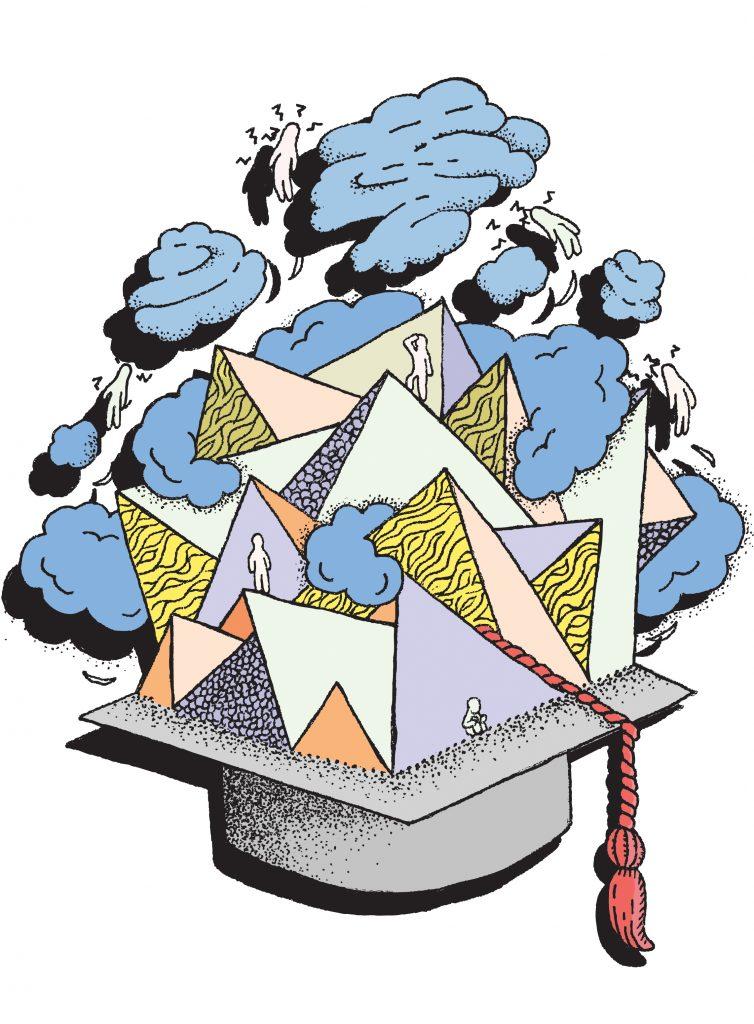
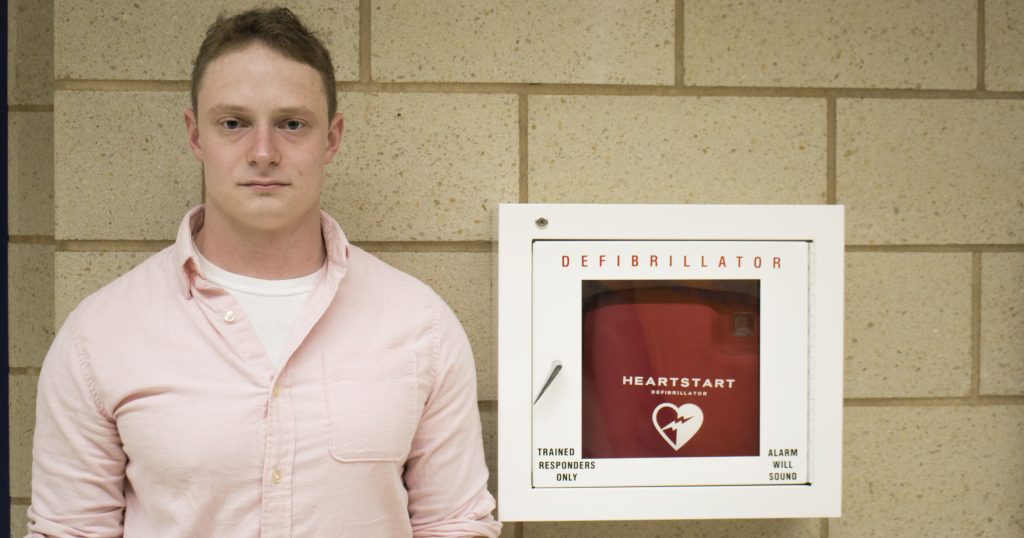

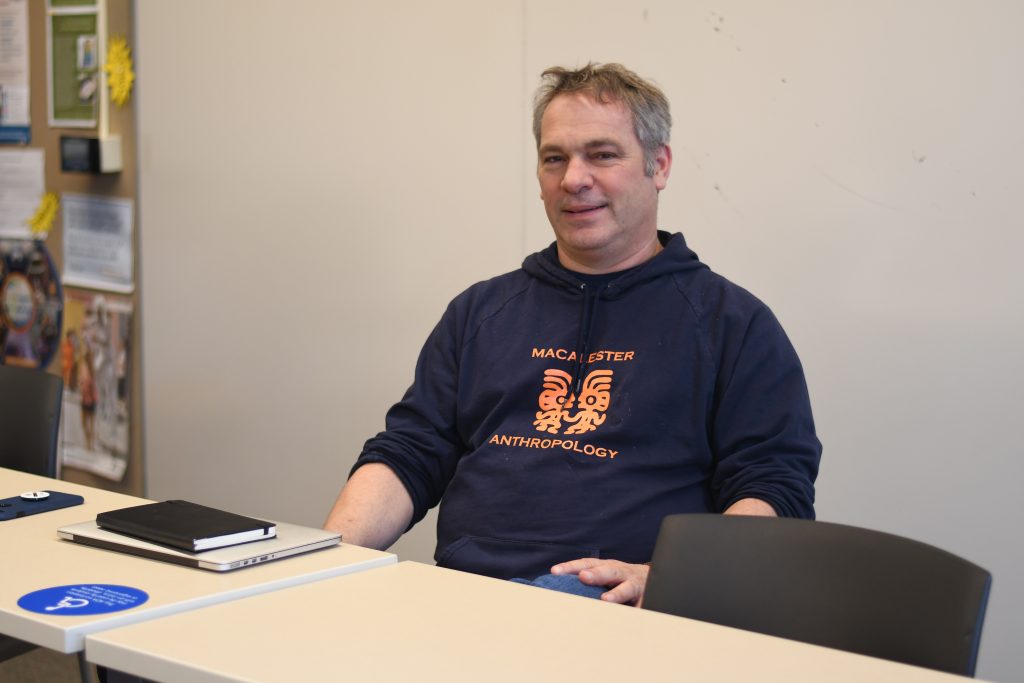
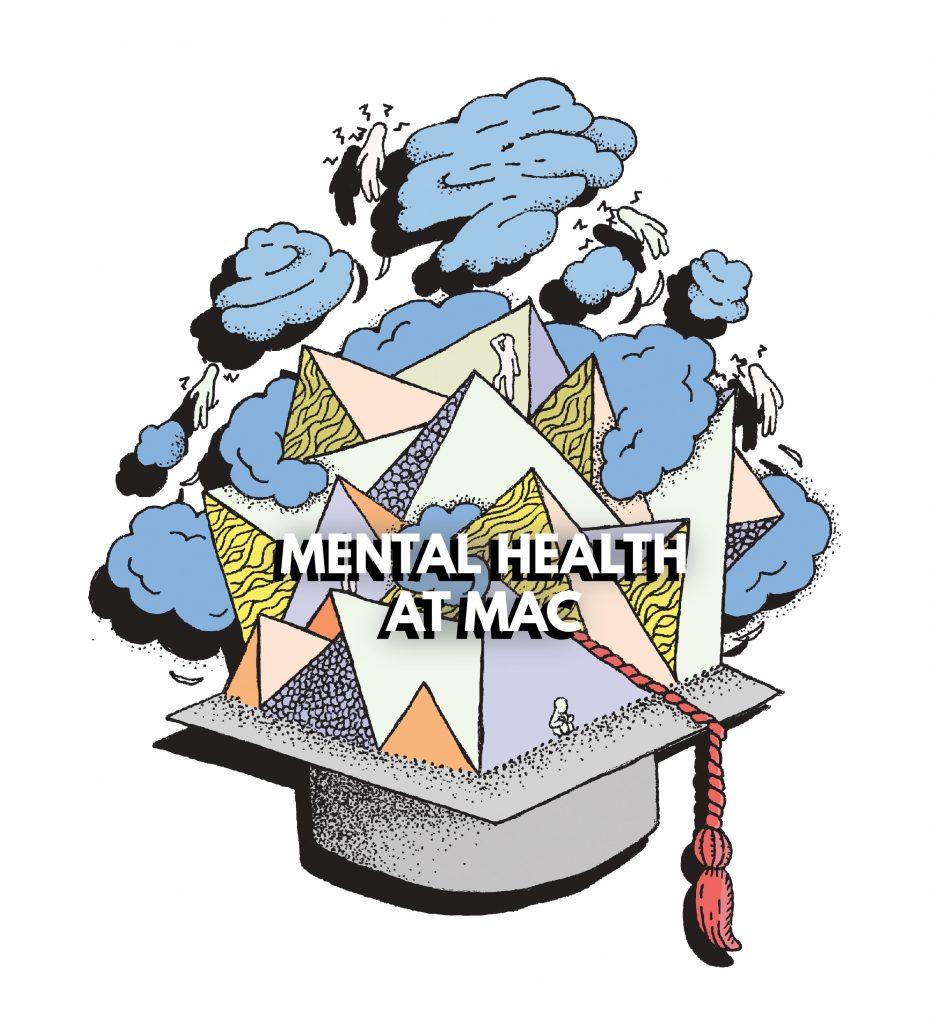
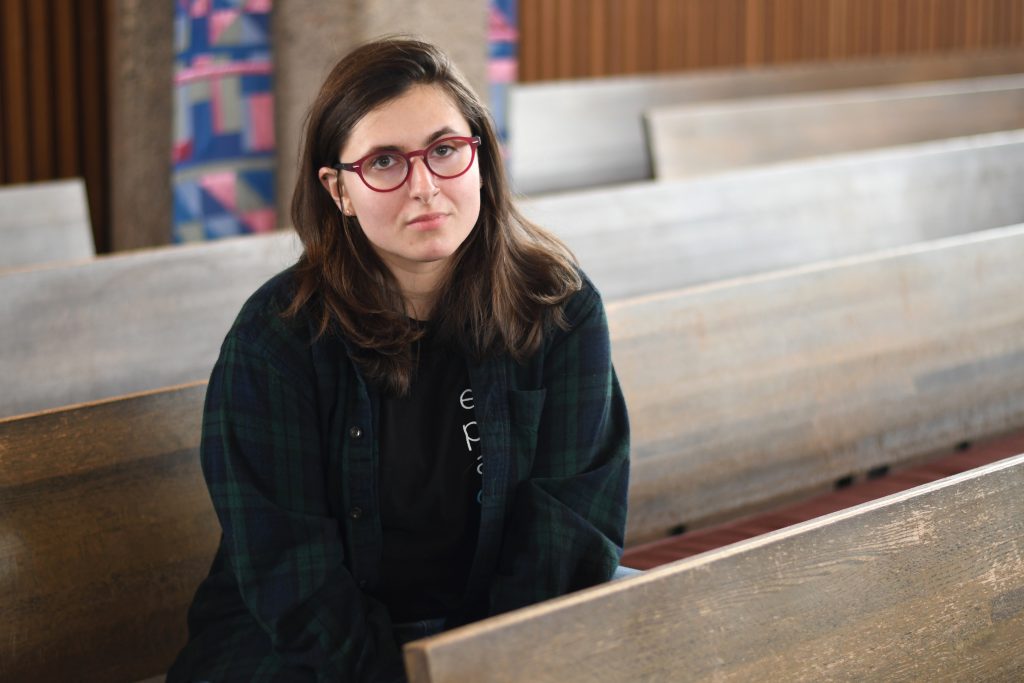

Emma Arnold • Sep 11, 2019 at 11:35 am
I found your blog web site on google and test just a few of your early posts. Proceed to maintain up the very good operate. I just extra up your RSS feed to my MSN Information Reader. Searching for ahead to studying extra from you later on!…
Denver warehouse • Sep 11, 2019 at 5:27 am
Really informative article.Really looking forward to read more. Fantastic.
fusionsilicon • Sep 11, 2019 at 12:40 am
thank you
linked web-site • Sep 10, 2019 at 2:24 pm
I love to start using in the cold months on Helinki. safest wow gold http://www.gamesky.com.au/ really are very vogue, which made of good good
Animated Explainer Video Agency • Sep 10, 2019 at 8:54 am
amazing article
Phil Scott • Sep 10, 2019 at 6:08 am
One other issue is when you are in a scenario where you do not have a cosigner then you may actually want to try to exhaust all of your financial aid options. You’ll find many awards and other scholarships that will offer you funds to support with classes expenses. Thank you for the post.
lista iptv • Sep 10, 2019 at 3:53 am
Really informative article.Really looking forward to read more. Keep writing.
Amolatina • Sep 10, 2019 at 12:45 am
worth reading
Amolatina.com • Sep 10, 2019 at 12:08 am
worth reading
Amolatina • Sep 9, 2019 at 4:04 pm
fantastic
Amolatina • Sep 9, 2019 at 1:00 pm
worth reading
Amolatina.com • Sep 9, 2019 at 10:17 am
excellent
Amolatina • Sep 9, 2019 at 9:01 am
out standing
rr email login • Sep 9, 2019 at 4:47 am
Thank you for your blog article.Really thank you!
Megan Bell • Sep 8, 2019 at 6:13 pm
Hi to every body, itís my first visit of this blog; this webpage consists of amazing and truly fine data for visitors.
bounce castle rental cost • Sep 8, 2019 at 2:45 pm
I really like and appreciate your blog post. Keep writing.
JUY-997 • Sep 8, 2019 at 7:38 am
Thanks a lot for the blog post.Thanks Again. Will read on…
Liam Kelly • Sep 7, 2019 at 1:43 pm
There are some interesting time limits in this article however I don’t know if I see all of them middle to heart. There may be some validity but I will take hold opinion until I look into it further. Good article , thanks and we want extra! Added to FeedBurner as well
https://www.signinsupport.net/ • Sep 7, 2019 at 1:15 pm
I value the blog article.Really thank you! Really Great.
my explanation • Sep 6, 2019 at 11:11 am
thank you
Home Tutor Bokaro • Sep 6, 2019 at 10:50 am
Im grateful for the article.Really looking forward to read more. Really Cool.
https://www.rcbattery.net/ • Sep 6, 2019 at 9:39 am
worth reading
elitetorrent • Sep 6, 2019 at 3:34 am
Best SMS Marketing Company Dubai Best SMS Marketing Company Dubai sms marketing company sms marketing agency SMS Marketing Dubai Best SMS Marketing Company Dubai Best SMS Marketing Company Dubai SMS UAE dubai sms Best SMS Marketing Company Dubai sms marketing Best SMS Marketing Company Dubai Best SMS Marketing Company Dubai Best SMS Marketing Company Dubai Best SMS Marketing Company Dubai SMS Marketing Best SMS Marketing Company Dubai Best SMS Marketing Company Dubai SMS Marketing provider Dubai sms advertising dubai Best SMS Marketing Company Dubai Best SMS Marketing Company Dubai dubai sms marketing Best SMS Marketing Company Dubai Best SMS Marketing Company Dubai bulk sms dubai
recliners for tall men • Sep 5, 2019 at 7:42 pm
Very neat post.Much thanks again. Great.
www.diigo.com • Sep 5, 2019 at 5:28 pm
I cherished as much as you will receive performed right here.
The cartoon is tasteful, your authored subject matter stylish.
however, you command get bought an impatience over that you
want be delivering the following. unwell certainly come further formerly
again as precisely the similar nearly a lot incessantly
inside case you protect this hike.
adam and eve free mystery gifts • Sep 5, 2019 at 2:43 pm
Im grateful for the post.Really thank you! Much obliged.
https://www.wl-toys.com/ • Sep 5, 2019 at 12:24 pm
Best SMS Marketing Company Dubai Best SMS Marketing Company Dubai sms marketing company sms marketing agency SMS Marketing Dubai Best SMS Marketing Company Dubai Best SMS Marketing Company Dubai SMS UAE dubai sms Best SMS Marketing Company Dubai sms marketing Best SMS Marketing Company Dubai Best SMS Marketing Company Dubai Best SMS Marketing Company Dubai Best SMS Marketing Company Dubai SMS Marketing Best SMS Marketing Company Dubai Best SMS Marketing Company Dubai SMS Marketing provider Dubai sms advertising dubai Best SMS Marketing Company Dubai Best SMS Marketing Company Dubai dubai sms marketing Best SMS Marketing Company Dubai Best SMS Marketing Company Dubai bulk sms dubai
dubai sms marketing • Sep 5, 2019 at 7:57 am
Best SMS Marketing Company Dubai Best SMS Marketing Company Dubai sms marketing company sms marketing agency SMS Marketing Dubai Best SMS Marketing Company Dubai Best SMS Marketing Company Dubai SMS UAE dubai sms Best SMS Marketing Company Dubai sms marketing Best SMS Marketing Company Dubai Best SMS Marketing Company Dubai Best SMS Marketing Company Dubai Best SMS Marketing Company Dubai SMS Marketing Best SMS Marketing Company Dubai Best SMS Marketing Company Dubai SMS Marketing provider Dubai sms advertising dubai Best SMS Marketing Company Dubai Best SMS Marketing Company Dubai dubai sms marketing Best SMS Marketing Company Dubai Best SMS Marketing Company Dubai bulk sms dubai
ben wa • Sep 5, 2019 at 4:21 am
Thanks a lot for the article.Really looking forward to read more. Will read on…
https://devpost.com • Sep 5, 2019 at 3:45 am
Hi! Someone in my Facebook group shared this website with us so I came to
give it a look. I’m definitely enjoying the information. I’m
book-marking and will be tweeting this to my followers! Terrific blog
and wonderful design and style.
veiny dildo • Sep 4, 2019 at 10:15 am
I appreciate you sharing this article post.Thanks Again. Really Great.
press release • Sep 4, 2019 at 6:11 am
love this article
Home Improvement writer • Sep 4, 2019 at 4:14 am
Looking forward to reading more. Great article.Really thank you! Much obliged.
Ava Johnston • Sep 4, 2019 at 1:43 am
excellent article
sms marketing • Sep 3, 2019 at 9:23 am
Here are just a few categories, Super Market Ads,Airlines & Aircraft,Alcohol,Beauty & Hygiene,Books & Magazines,Candy,Cars,Celebrities,Clothes,Coke,Phone & Communication,
Amolatina.com • Sep 2, 2019 at 9:09 pm
And for a car buff in your life check out our 4 vol Vintage Brooklyn Auto Ads
adam and eve coupon code • Sep 2, 2019 at 4:17 am
Thanks for the blog article.Really thank you! Cool.
whirlpool lavavajillas whirlpool • Sep 2, 2019 at 2:04 am
Servicios de lavanderia profesional orientada al sector particular como industrial, la empresa se encuentra radicada en Corrientes, contamos con cuatros sucursales para una mejor atención. Lavandería Industrial Servisam nos esforzamos en mejorar nuestros servicios a nuestros clientes, mediante calidad de productos, agua, equipamiento, formación, etc. Lavandería Industrial Servisam ofrece sus servicios a Hoteles, Apartamentos, Bumgalows, Restaurantes,realizamos servicios de Tintorería, etc. Te ofrecemos la posibilidad de diseñar tu propia funda nórdica personalizandola con tus fotografias.
life changing experiences • Sep 1, 2019 at 11:16 pm
Drinks,TV & Electronics,Movies & Entertainment,Food,Furniture,Household,Jewelry & Watches,Kids & Babies,Medicine,Music ,Oil& Gas,Perfume,,Restaurants,Shaving, Sports,Cigarettes & Tobacco,Tools & Gadgets,Toys,Transportation,Travel,Want ads,For Sale, Apts to Let cars for sale and many more!!
online shopping challenge • Sep 1, 2019 at 6:09 pm
I truly appreciate this blog.Really thank you! Really Great.
bedroom bondage toys • Sep 1, 2019 at 11:42 am
I think this is a real great blog article.Thanks Again. Really Great.
attract money music pinterest • Sep 1, 2019 at 8:56 am
Brooklyn vintage Ads is a 25-volume set of ads from the 20th century(late 1800’s to 1950),Great for the Brooklyn history buff or advertiser in your life, get a glimpse back on a lot of new inventions and products,and check out the food and cloths prices.. This set features advertising from some of the most prestigious companies of the day. See if you can spot a few who still produce products 100 years later. OVER 300 ADS IN EACH BOOK, no two books are the same, ads are randomly selected..
wall mounted dildo • Sep 1, 2019 at 4:11 am
Thank you ever so for you post.Really looking forward to read more. Cool.
SDJS-034 • Aug 31, 2019 at 7:23 pm
Really enjoyed this blog article.
news today • Aug 31, 2019 at 1:44 pm
Really enjoyed this post.Much thanks again. Really Cool.
iPhone App Development Company • Aug 31, 2019 at 1:15 am
Brooklyn vintage Ads is a 25-volume set of ads from the 20th century(late 1800’s to 1950),Great for the Brooklyn history buff or advertiser in your life, get a glimpse back on a lot of new inventions and products,and check out the food and cloths prices.. This set features advertising from some of the most prestigious companies of the day. See if you can spot a few who still produce products 100 years later. OVER 300 ADS IN EACH BOOK, no two books are the same, ads are randomly selected..
TBF Financial reviews • Aug 30, 2019 at 7:02 pm
Looking forward to reading more. Great article post.Thanks Again. Awesome.
Visto Cina • Aug 30, 2019 at 6:08 pm
Drinks,TV & Electronics,Movies & Entertainment,Food,Furniture,Household,Jewelry & Watches,Kids & Babies,Medicine,Music ,Oil& Gas,Perfume,,Restaurants,Shaving, Sports,Cigarettes & Tobacco,Tools & Gadgets,Toys,Transportation,Travel,Want ads,For Sale, Apts to Let cars for sale and many more!!
Denver microblading • Aug 30, 2019 at 12:32 pm
Thank you ever so for you article.Much thanks again. Really Great.
Visto Cina • Aug 30, 2019 at 11:53 am
Here are just a few categories, Super Market Ads,Airlines & Aircraft,Alcohol,Beauty & Hygiene,Books & Magazines,Candy,Cars,Celebrities,Clothes,Coke,Phone & Communication,
Visto Cina • Aug 30, 2019 at 8:39 am
Brooklyn vintage Ads is a 25-volume set of ads from the 20th century(late 1800’s to 1950),Great for the Brooklyn history buff or advertiser in your life, get a glimpse back on a lot of new inventions and products,and check out the food and cloths prices.. This set features advertising from some of the most prestigious companies of the day. See if you can spot a few who still produce products 100 years later. OVER 300 ADS IN EACH BOOK, no two books are the same, ads are randomly selected..
comprare visto Cina • Aug 30, 2019 at 7:22 am
And for a car buff in your life check out our 4 vol Vintage Brooklyn Auto Ads
acquistare visto cinese • Aug 30, 2019 at 6:24 am
Here are just a few categories, Super Market Ads,Airlines & Aircraft,Alcohol,Beauty & Hygiene,Books & Magazines,Candy,Cars,Celebrities,Clothes,Coke,Phone & Communication,
latest vacancies in nigeria • Aug 30, 2019 at 4:25 am
Great, thanks for sharing this article.Much thanks again. Fantastic.
denver auto accident attorney • Aug 29, 2019 at 7:33 pm
A big thank you for your article post.Really thank you! Want more.
acquistare visto cinese • Aug 29, 2019 at 2:35 pm
Brooklyn vintage Ads is a 25-volume set of ads from the 20th century(late 1800’s to 1950),Great for the Brooklyn history buff or advertiser in your life, get a glimpse back on a lot of new inventions and products,and check out the food and cloths prices.. This set features advertising from some of the most prestigious companies of the day. See if you can spot a few who still produce products 100 years later. OVER 300 ADS IN EACH BOOK, no two books are the same, ads are randomly selected..
Visto Cina • Aug 29, 2019 at 1:28 pm
And for a car buff in your life check out our 4 vol Vintage Brooklyn Auto Ads
small bouncy castles for hire lewisham • Aug 29, 2019 at 12:04 pm
Hey, thanks for the blog post.Really thank you! Great.
debate.org • Aug 29, 2019 at 4:34 am
Hi colleagues, good article and pleasant urging commented here, I
am actually enjoying by these.
hammersmith bouncy castles for hire • Aug 29, 2019 at 4:11 am
Great, thanks for sharing this blog.Really thank you! Much obliged.
reviews of elite singles • Aug 28, 2019 at 5:55 pm
And for a car buff in your life check out our 4 vol Vintage Brooklyn Auto Ads
chinalove review • Aug 28, 2019 at 4:40 pm
Here are just a few categories, Super Market Ads,Airlines & Aircraft,Alcohol,Beauty & Hygiene,Books & Magazines,Candy,Cars,Celebrities,Clothes,Coke,Phone & Communication,
reviews elite singles • Aug 28, 2019 at 4:25 pm
Drinks,TV & Electronics,Movies & Entertainment,Food,Furniture,Household,Jewelry & Watches,Kids & Babies,Medicine,Music ,Oil& Gas,Perfume,,Restaurants,Shaving, Sports,Cigarettes & Tobacco,Tools & Gadgets,Toys,Transportation,Travel,Want ads,For Sale, Apts to Let cars for sale and many more!!
victoria hearts website • Aug 28, 2019 at 12:54 pm
Here are just a few categories, Super Market Ads,Airlines & Aircraft,Alcohol,Beauty & Hygiene,Books & Magazines,Candy,Cars,Celebrities,Clothes,Coke,Phone & Communication,
victoria dating site • Aug 28, 2019 at 11:55 am
Brooklyn vintage Ads is a 25-volume set of ads from the 20th century(late 1800’s to 1950),Great for the Brooklyn history buff or advertiser in your life, get a glimpse back on a lot of new inventions and products,and check out the food and cloths prices.. This set features advertising from some of the most prestigious companies of the day. See if you can spot a few who still produce products 100 years later. OVER 300 ADS IN EACH BOOK, no two books are the same, ads are randomly selected..
kids bounce house Bexley • Aug 28, 2019 at 8:54 am
A big thank you for your blog post.Much thanks again. Want more.
แทงบอลไม่ให้เสีย • Aug 27, 2019 at 7:55 pm
Thanks for the blog post.Really looking forward to read more. Will read on…
departments store advertisments • Aug 27, 2019 at 7:37 pm
Here are just a few categories, Super Market Ads,Airlines & Aircraft,Alcohol,Beauty & Hygiene,Books & Magazines,Candy,Cars,Celebrities,Clothes,Coke,Phone & Communication,
50 percent off adameve • Aug 26, 2019 at 2:51 pm
Thanks for the article.Really looking forward to read more. Really Cool.
www.hotmail.com sign in • Aug 26, 2019 at 5:18 am
Great, thanks for sharing this article.Much thanks again.
www.divephotoguide.com • Aug 26, 2019 at 5:15 am
Hey very cool web site!! Man .. Excellent ..
Wonderful .. I will bookmark your blog and take the
feeds additionally? I’m glad to find a lot of helpful information right here within the put up, we want develop more strategies on this regard, thank you
for sharing. . . . . .
rummy • Aug 26, 2019 at 4:03 am
thank you very much
Ways to earn money • Aug 26, 2019 at 2:38 am
amazing article
Ways to earn money • Aug 25, 2019 at 11:05 pm
thank you very much
vegus168 hd • Aug 25, 2019 at 5:00 pm
I really like and appreciate your blog.Really thank you! Really Great.
yellow pages UK • Aug 25, 2019 at 5:07 am
wow, awesome blog.Thanks Again. Cool.
JUY 978 • Aug 24, 2019 at 8:22 pm
Major thanks for the blog.
sos-lar.pt • Aug 24, 2019 at 6:52 pm
amazing article
FSET-848 • Aug 24, 2019 at 2:06 pm
I cannot thank you enough for the article.Much thanks again. Fantastic.
Badosa • Aug 22, 2019 at 6:22 pm
You are my inspiration , I possess few web logs and very sporadically run out from to brand 🙁
bouncy castle obstacle course Bexley • Aug 22, 2019 at 10:04 am
I loved your article post.Really looking forward to read more. Will read on…
inflatable disco dome Lewisham • Aug 22, 2019 at 4:32 am
I cannot thank you enough for the blog.Really looking forward to read more. Will read on…
walmartone • Aug 21, 2019 at 6:23 pm
Muchos Gracias for your blog article. Awesome.
comprar pokemon amarillo • Aug 21, 2019 at 2:15 pm
thank you very much
comprar viajes baratos • Aug 21, 2019 at 12:22 pm
amazing article
Boston Car Service • Aug 21, 2019 at 12:51 am
Thanks for sharing, this is a fantastic article.Really looking forward to read more. Really Cool.
comprar zapatillas airmax baratas • Aug 20, 2019 at 11:53 pm
informative blog
comprar zapatillas airmax baratas • Aug 20, 2019 at 9:59 pm
informative blog
website laten maken • Aug 20, 2019 at 10:35 am
amazing article
SSNI 577 • Aug 20, 2019 at 10:07 am
Appreciate you sharing, great article post.
kids bounce house hammersmith • Aug 20, 2019 at 4:03 am
I really like and appreciate your post. Want more.
new movie in theater • Aug 20, 2019 at 3:22 am
amazing article
JUNY 012 • Aug 19, 2019 at 8:41 pm
Wow, great article.Really looking forward to read more. Want more.
New Movies in • Aug 19, 2019 at 6:45 pm
thank you very much
A&A Wildlife Removal • Aug 19, 2019 at 9:35 am
Very informative blog.Really thank you! Keep writing.
NIW attorney • Aug 19, 2019 at 2:48 am
Thanks a lot for the article post. Awesome.
bingo-voyance.com • Aug 18, 2019 at 6:50 pm
Great blog article. Great.
strapon dildo for couples • Aug 18, 2019 at 2:38 pm
Muchos Gracias for your post.Really thank you! Much obliged.
adam and eve challenge • Aug 18, 2019 at 9:38 am
I cannot thank you enough for the blog article. Fantastic.
CMS blogg • Aug 17, 2019 at 6:01 pm
Very good blog article. Great.
sex bondage • Aug 17, 2019 at 1:14 pm
Thanks again for the post.Really looking forward to read more. Will read on…
AV rental • Aug 17, 2019 at 5:52 am
I truly appreciate this blog.Thanks Again. Much obliged.
bouncy castle service in hammersmith area • Aug 16, 2019 at 9:14 am
Im thankful for the post.Really thank you! Keep writing.
1 • Aug 15, 2019 at 10:20 am
Thank you ever so for you post.Really thank you!
MIDE-683 • Aug 15, 2019 at 4:48 am
I cannot thank you enough for the blog.Really thank you! Really Cool.
mina • Aug 13, 2019 at 11:05 am
Some genuinely fantastic info , Gladiola I detected this. “What’s a man’s age He must hurry more, that’s all Cram in a day, what his youth took a year to hold.” by Robert Browning.
Florence • Aug 13, 2019 at 9:37 am
If some one needs expert view concerning running a blog after that i propose him/her
to pay a quick visit this web site, Keep up the pleasant work.
buy tramadol online • Aug 13, 2019 at 3:22 am
Thanks for the blog article.Really looking forward to read more. Cool.
Rusty • Aug 12, 2019 at 6:20 pm
Thanks I needed this
www.gtainside.com • Aug 11, 2019 at 6:36 am
Howdy very nice blog!! Guy .. Beautiful ..
Amazing .. I will bookmark your website and take
the feeds also? I’m satisfied to search out
so many useful information right here in the put up, we’d
like work out extra strategies in this regard, thank
you for sharing. . . . . .
https://buddypress.org/members/diskness36/profile/ • Aug 11, 2019 at 5:48 am
Yay google is my queen helped me to find this great site!
Rebecca • Aug 11, 2019 at 5:07 am
I think you have mentioned some very interesting details, thank you for the post.
keyword phrase : • Aug 10, 2019 at 6:11 am
Awesome article post. Really Cool.
tribulus terrestris e maca peruana • Aug 9, 2019 at 10:54 am
Im obliged for the post. Great.
SSNI-561 • Aug 9, 2019 at 2:39 am
I am so grateful for your article post. Awesome.
https://framagit.org/canorous37 • Aug 8, 2019 at 10:27 am
If some one needs expert view about blogging then i
suggest him/her to go to see this blog, Keep up the pleasant job.
메이저토토 • Aug 8, 2019 at 2:59 am
Major thankies for the blog post. Really Cool.
https://youtube.com/channel/UCVqEwYdG-3757IGnLsXh0Gg/ • Aug 7, 2019 at 11:48 am
Really appreciate you sharing this article.Really thank you! Keep writing.
www.imfaceplate.com • Aug 7, 2019 at 3:51 am
As I site possessor I believe the content matter here is rattling fantastic , appreciate
it for your efforts. You should keep it up forever!
Best of luck.
click here to investigate • Aug 7, 2019 at 2:43 am
I cannot thank you enough for the blog article.Really thank you! Cool.
Ormekur til katte • Aug 6, 2019 at 2:38 am
I think this is a real great blog article.Really looking forward to read more.
party venues in queens ny • Aug 5, 2019 at 3:14 pm
Really informative article.Thanks Again. Will read on…
Boston Car Service • Aug 5, 2019 at 9:42 am
A round of applause for your article.Really looking forward to read more. Really Cool.
diy male sex toys • Aug 5, 2019 at 2:44 am
Thanks again for the post.Much thanks again. Fantastic.
Adam Eve coupon couponcabin • Aug 4, 2019 at 5:21 pm
Fantastic post.Thanks Again. Great.
bondage sex toys for couples • Aug 4, 2019 at 1:20 pm
Really appreciate you sharing this article.
Amelie • Aug 4, 2019 at 12:48 pm
Good day very nice blog!! Guy .. Beautiful .. Superb ..
I will bookmark your blog and take the feeds additionally?
I am glad to find so many useful info right here in the put up, we
need work out more strategies in this regard, thanks for
sharing. . . . . .
best male sex toys • Aug 4, 2019 at 4:40 am
Say, you got a nice blog post.Thanks Again. Cool.
hiphop music • Aug 3, 2019 at 4:10 pm
Enjoyed every bit of your post. Fantastic.
ABP-893 • Aug 3, 2019 at 10:24 am
Thanks a lot for the article.
buytramadolonlineusa • Aug 3, 2019 at 3:33 am
I am so grateful for your blog article.Much thanks again. Really Cool.
Maths Tutor • Aug 2, 2019 at 3:13 pm
Fantastic blog article.Really looking forward to read more. Awesome.
(passwrd: gianna) • Aug 2, 2019 at 8:50 am
Thank you ever so for you post.Really looking forward to read more. Want more.
Organic • Jul 31, 2019 at 3:55 am
wow, awesome blog.Much thanks again. Much obliged.
ICSE Tutor • Jul 30, 2019 at 6:10 am
Fantastic article post.Really thank you! Much obliged.
removals preston • Jul 29, 2019 at 7:17 pm
Really appreciate you sharing this blog post.Really thank you! Really Great.
my sources • Jul 29, 2019 at 5:14 pm
wow, awesome blog article. Great.
coupon code • Jul 29, 2019 at 3:04 pm
Really enjoyed this blog article. Keep writing.
best adam and eve dildo • Jul 29, 2019 at 8:35 am
I appreciate you sharing this post.Thanks Again. Keep writing.
adam and eve challenge • Jul 29, 2019 at 2:44 am
Thanks so much for the article post.Much thanks again. Fantastic.
open ended penis stroker • Jul 28, 2019 at 6:21 pm
Very informative article.Really thank you!
https://www.youtube.com/watch?v=zi5IEYdRREw&t=45s • Jul 28, 2019 at 6:18 pm
It is racist to deny Whites & Arabs are a mix of blond haired blue eyed white skinned Nordics and the Indian race, do you agree?
Home gym ideas • Jul 28, 2019 at 9:05 am
Hey, thanks for the article.Thanks Again. Really Cool.
Luksus hundeseng • Jul 28, 2019 at 5:39 am
I really liked your post. Great.
didlo for bbw • Jul 27, 2019 at 7:28 pm
wow, awesome blog article.Thanks Again. Will read on…
vagina stroker • Jul 27, 2019 at 8:54 am
I really like and appreciate your article post. Awesome.
5 inch dildo • Jul 27, 2019 at 4:29 am
wow, awesome blog article.Really thank you! Really Great.
news headlines capread • Jul 26, 2019 at 1:24 pm
I think this is a real great blog.Thanks Again. Much obliged.
JUY-945 • Jul 26, 2019 at 7:41 am
I value the post.Much thanks again. Much obliged.
http://sporthealthylife.com/ • Jul 25, 2019 at 7:49 am
Thanks for the blog article.Really thank you!
blowjob • Jul 25, 2019 at 2:46 am
A big thank you for your article. Really Great.
www.apsense.com • Jul 24, 2019 at 5:37 pm
Hello There. I found your blog using msn. This is a
really well written article. I will make sure to bookmark it and come back to
read more of your useful info. Thanks for the post. I will certainly
comeback.
BIGPOND EMAIL SUPPORT NUMBER • Jul 24, 2019 at 5:23 pm
Thanks again for the blog article.Really thank you!
http://moviesporno.net/ • Jul 24, 2019 at 11:12 am
Muchos Gracias for your article post.Much thanks again. Great.
http://duvporno.biz/ • Jul 24, 2019 at 5:58 am
I cannot thank you enough for the blog article.Thanks Again. Fantastic.
custom-made office furniture • Jul 23, 2019 at 2:40 pm
Thanks a lot for the blog article.Thanks Again. Much obliged.
Sherri Kaiktsian • Jul 22, 2019 at 10:24 pm
Mass parsite http://bit.ly/2W9CVkn
Martial arts classes in Sacramento • Jul 22, 2019 at 2:28 am
Im obliged for the article post.Really looking forward to read more.
eebest8 mmx • Jul 21, 2019 at 3:41 am
whoah this blog is wonderful i really like studying your posts. Stay up the great paintings! You realize, a lot of persons are looking around for this info, you can help them greatly.
eebest8 seo
https://www.uspslitebluelogin.net/ • Jul 20, 2019 at 10:46 am
Wow, great blog article.Thanks Again. Will read on…
www.liteblue.usps.gov website • Jul 20, 2019 at 4:27 am
Thanks a lot for the article.Really looking forward to read more. Will read on…
Networking Guru • Jul 19, 2019 at 11:14 am
Really informative article.Much thanks again. Keep writing.
buy facebook account • Jul 19, 2019 at 5:22 am
This is one awesome blog.Really thank you! Much obliged.
piskeorm hund • Jul 18, 2019 at 10:07 pm
Really appreciate you sharing this blog. Much obliged.
Zack • Jul 18, 2019 at 4:03 pm
Hey There. I found your blog using msn. This is a really well written article.
I’ll be sure to bookmark it and come back to read more of your useful info.
Thanks for the post. I will definitely comeback.
https://www.play.fm/teddyblythe • Jul 17, 2019 at 3:04 pm
What you said was actually very reasonable. However, what about this?
suppose you added a little information? I am not suggesting your content is not good., however suppose you
added a post title that grabbed a person’s attention? I mean For involuntary leave policies,
colleges turn to the law – The Mac Weekly is kinda boring.
You ought to look at Yahoo’s front page and note how they create post headlines to get people interested.
You might try adding a video or a related picture
or two to get people interested about everything’ve got to
say. In my opinion, it would bring your posts a little livelier.
framagit.org • Jul 14, 2019 at 9:11 pm
Hi! Someone in my Myspace group shared this site with us so I came to take a look.
I’m definitely enjoying the information. I’m bookmarking and will be tweeting this to my followers!
Great blog and great design.
www.folkd.com • Jul 14, 2019 at 3:23 pm
Hello! Someone in my Facebook group shared this site with us so I came to take a look.
I’m definitely loving the information. I’m
bookmarking and will be tweeting this to
my followers! Superb blog and excellent style and design.
fontlibrary.org • Jul 9, 2019 at 6:08 pm
Terrific work! This is the type of info that are supposed to be shared around the internet.
Disgrace on Google for no longer positioning this put up higher!
Come on over and talk over with my website . Thank you =)
Lakseolie til hund • Jun 25, 2019 at 11:04 pm
Hey, thanks for the blog post.Much thanks again. Really Great.
manu • Apr 6, 2019 at 9:26 pm
Simply wanna input on few general things, The website style is perfect, the subject material is rattling good. “Believe those who are seeking the truth. Doubt those who find it.” by Andre Gide.
paul • Apr 5, 2019 at 12:33 am
I got what you intend, appreciate it for posting .Woh I am happy to find this website through google. “Spare no expense to make everything as economical as possible.” by Samuel Goldwyn.